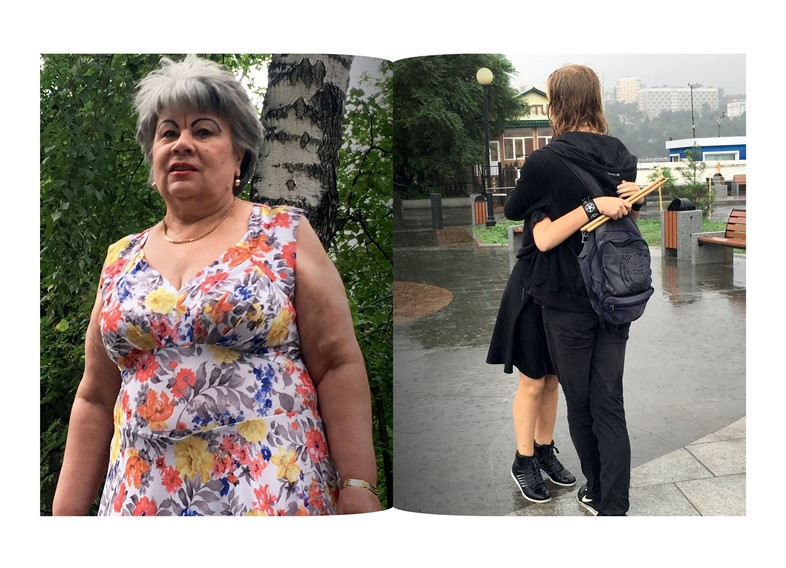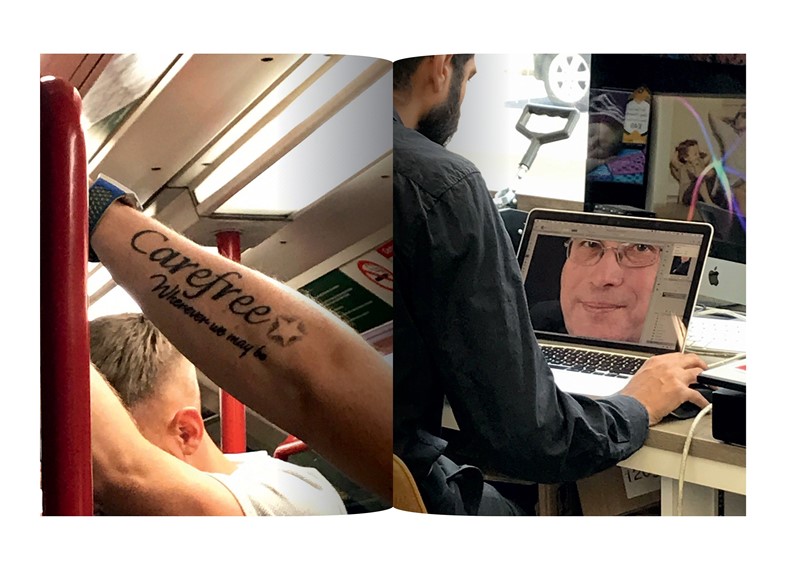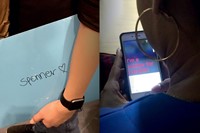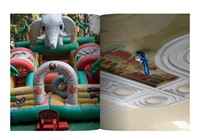Taken on her iPhone between 2014 and 2019, Rosie Marks’ photos celebrate the everyday oddities of human life
What it means to be voyeuristic has changed in the age of social media and social distancing. These days, we really can only see what people curate for us. Photographer and self-confessed voyeur Rosie Marks challenges this notion in her new small-but-perfectly-formed publication documenting humanity in all its absurdity.
Shot entirely on an iPhone, each image in 08.14-10.19 is a peek into a time before screens were our only keyhole into the lives of others. The London-based photographer sees beauty in the banal and oddities in the everyday, documenting people wrestling with striped umbrellas, snoozing on the commute, canoodling at an art fair or carefully composing a Snapchat.
Published by DoBeDo, the collection of 526 images is pertinent documentation of a time we’re currently in mourning for. Shot between 2014 and 2019 – as its title indicates – the book depicts people interacting in close quarters and breathing in the same air, with not a mask to be seen. Some are still shot with all the cares of their world on their shoulders, but none of these happens to be a ‘global pandemic’.
One wouldn’t guess at first glance that the book contains glimpses into the lives of thousands of unassuming subjects. But what about the morality of photographing the unconsenting subject, you might ask? Marks did too, and in response, she commissioned a psychiatrist to analyse her imagery and write a text based on what she saw. As they never met, the artist was afforded the same intimacy as her subjects: Mark’s work was flipped on itself and her eye was judged, just as she judges the people in her pictures. Here, speaking in her own words, the photographer tells us more about what inspired the project.

“I find it therapeutic seeing and documenting people at their most free. There is something I like about being a fly on the wall in someone's life, even if it’s in a public place.
“Morally, of course, there are issues with photographing people while they’re unaware because many wouldn’t like it. I think my moral standpoint has matured with age and a better understanding and sensitivity of people. That being said, I have always avoided certain subjects for obvious reasons. In legal terms, taking pictures of people in public places is OK.
“The final pages of the book feature a character analysis from a professional psychologist. When I first showed it to Tyrone [Lebon, the publisher] he wondered what a therapist would have to say about me if they saw the images alone. It was interesting (and slightly uncomfortable) to have psychological words and theories behind the pictures I take – and therefore me. Most of it is, of course, true. The psychologist noted, ‘one word that comes to mind is ‘cynical’’. I like to see my work as more positive than cynical – and hopefully honest.
“The images in the book were shot all over the world, mainly because I was travelling frequently for work. Though the majority were in London and America, some of my favourite images in the book were taken in the Arctic Circle in Russia.

“I started with about 80,000 images, then edited it down to a thousand, before sorting it loosely into categories or themes. This ended up being the skeleton of the book. The themes were quite simple and more of a way to organise myself. Travel, which was sorted into trains, cars, air, holidays and leisure, then animals and pets, things that look similar or people dressed similarly, still life, hands, feet, the art world, tattoos, romance, nights out … There were subsections within each which were used to pair images together for a certain relation or an aesthetic similarity.
“I used to be pretty bad at organising myself, particularly with earlier images ... I used to wipe my phone regularly to make room for new pictures. It’s funny, because I worked on someone else’s archive for several years when I was an assistant, but I still haven’t made my own. This book serves as some sort of archive, albeit a heavily slimmed down version.
“I was lucky to have worked on some exciting projects at the beginning of the year, right before Covid hit, so I had a backlog of things to work on during the first lockdown. For right or wrong, London seemed a bit freer in the summer and there was a lot going on in the streets to watch (and document). I certainly have not taken as many pictures this year as the previous few, but it has been inspiring in other ways.”
08.14-10.19 by Rosie Marks is published by DoBeDo.






